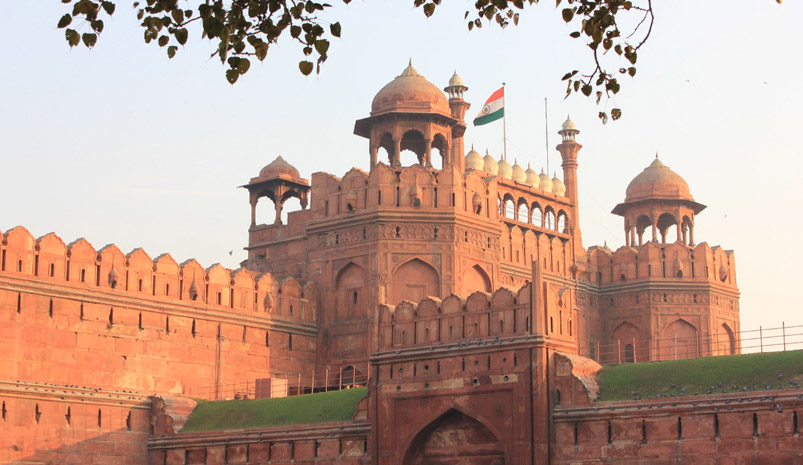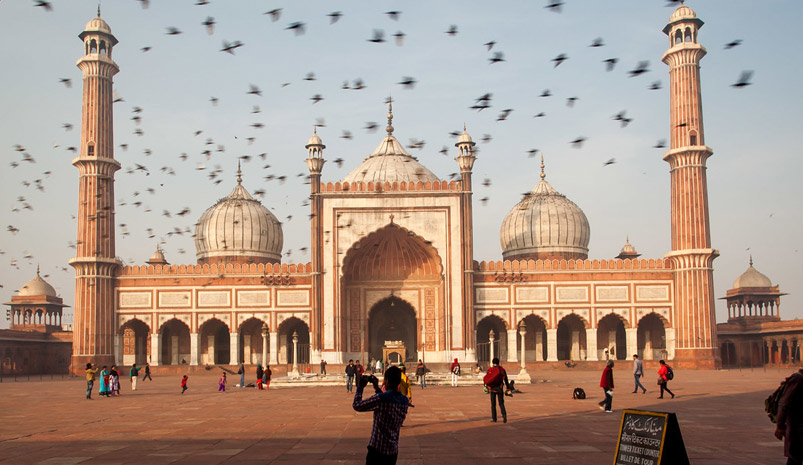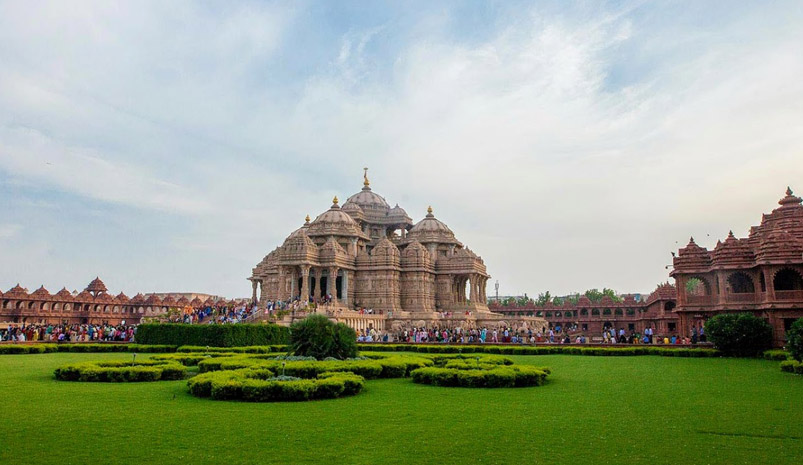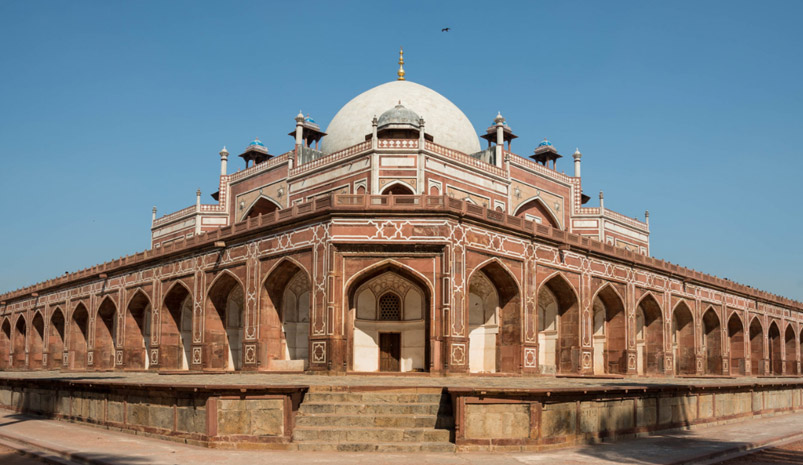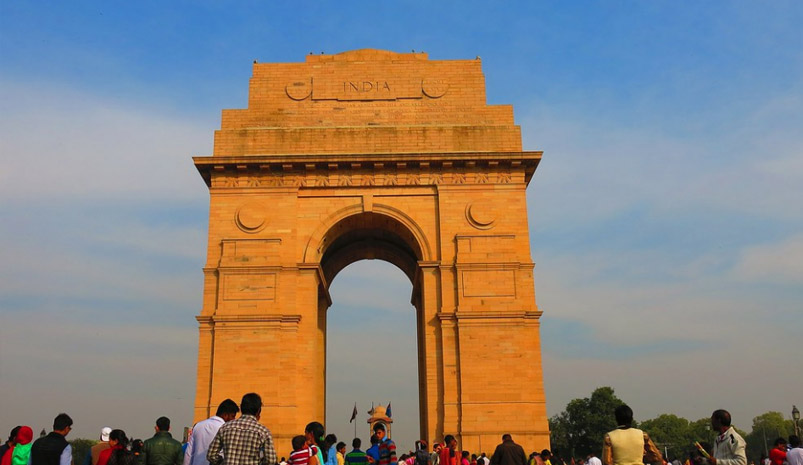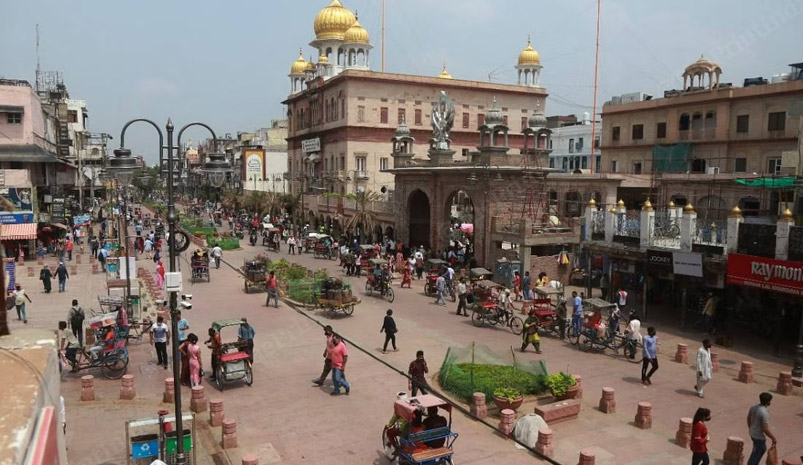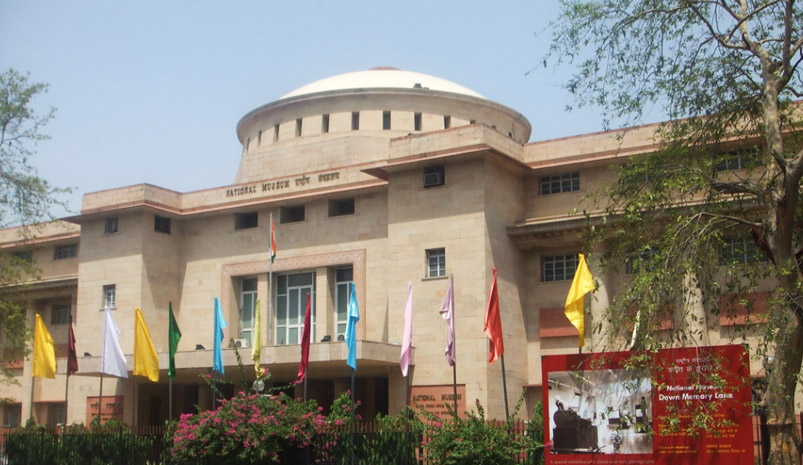Delhi
Delhi, the capital city of India, is a vibrant and diverse destination with a rich historical and cultural heritage. Here are some popular attractions and destinations in Delhi:
- Red Fort: A UNESCO World Heritage Site, the Red Fort is an iconic monument that showcases the grandeur of Mughal architecture. It served as the residence of Mughal emperors and is known for its impressive red sandstone walls and intricate artwork.
- Qutub Minar: Another UNESCO World Heritage Site, the Qutub Minar is a towering minaret that dates back to the 12th century. It is one of the tallest brick minarets in the world and is surrounded by ancient ruins and a beautiful complex.
- Jama Masjid: Located in Old Delhi, Jama Masjid is one of the largest and most important mosques in India. It was built by Emperor Shah Jahan and can accommodate thousands of worshippers. The mosque’s architectural beauty and its sprawling courtyard are worth exploring.
- India Gate: India Gate is a prominent landmark and a war memorial dedicated to the Indian soldiers who lost their lives in World War I. It is a popular spot for picnics, leisurely walks, and enjoying the surrounding gardens.
- Humayun’s Tomb: Humayun’s Tomb is a magnificent mausoleum and another UNESCO World Heritage Site. It was built in the 16th century and served as the inspiration for the Taj Mahal. The complex features beautiful gardens and stunning architecture.
- Akshardham Temple: Akshardham Temple is a sprawling complex dedicated to Indian art, culture, and spirituality. It showcases intricate carvings, a mesmerizing light and sound show, and a boat ride depicting ancient Indian history and traditions.
- Chandni Chowk: Chandni Chowk is one of the oldest and busiest markets in Delhi. It is a vibrant and bustling place where you can experience the essence of Old Delhi, sample delicious street food, and shop for traditional Indian attire, jewelry, and handicrafts.
- National Museum: The National Museum in Delhi houses an extensive collection of artifacts, artworks, and historical treasures that provide insights into India’s rich history, art, and culture.
These are just a few highlights of the numerous attractions and destinations that Delhi has to offer. The city also boasts numerous gardens, museums, art galleries, temples, and bustling markets that showcase its vibrant character and offer a glimpse into its diverse cultural heritage.
History
Delhi has a fascinating history that spans over several centuries. It has been a seat of power for various dynasties and empires, including the Mauryas, Mughals, and British. The city has witnessed the rise and fall of numerous kingdoms, each leaving behind their architectural marvels and cultural legacies. From the ancient city of Indraprastha mentioned in the epic Mahabharata to the medieval period dominated by the Delhi Sultanate and the grandeur of the Mughal Empire, Delhi’s history is intertwined with the stories of conquests, emperors, and cultural exchange. The city has seen the influence of different rulers and empires, contributing to its rich and diverse heritage that can still be experienced today.
Geography
Delhi, the capital city of India, is situated in the northern part of the country. It is located on the western bank of the Yamuna River and is bordered by the states of Haryana and Uttar Pradesh. The geography of Delhi is primarily characterized by the Gangetic Plains, which are flat and fertile. The city has a mix of urban areas, residential neighborhoods, parks, and historical sites. Delhi experiences a semi-arid climate with hot summers and cool winters. The Yamuna River, along with several smaller tributaries, traverses through the city, providing water resources and adding to the overall landscape.
Weather
Delhi experiences a diverse climate with distinct seasons. Here’s an overview of the weather in Delhi:
Summer (April to June): Summers in Delhi are hot and dry, with temperatures often exceeding 40°C (104°F). May and June are typically the hottest months. It is advisable to stay hydrated, wear light and breathable clothing, and seek shade during the peak daytime hours.
Monsoon (July to September): The monsoon season brings relief from the scorching heat as the city receives moderate to heavy rainfall. Temperatures during this time range from 25°C to 35°C (77°F to 95°F). Umbrellas or raincoats are essential during monsoons to navigate through occasional downpours.
Autumn (October to November): Autumn is a pleasant season in Delhi with temperatures ranging from 20°C to 30°C (68°F to 86°F). The weather is mild, and humidity levels begin to decrease. It is a popular time for outdoor activities and sightseeing.
Winter (December to February): Winters in Delhi are cool to cold, with temperatures ranging from 7°C to 20°C (45°F to 68°F). December and January are the coldest months, and temperatures can drop to as low as 4°C (39°F). Warm clothing, including jackets and sweaters, is necessary during this time.
Overall, the best time to visit Delhi is during the autumn and winter months (October to February) when the weather is pleasant for outdoor activities and sightseeing. However, each season has its charm and offers unique experiences. It’s advisable to check the weather forecast before your visit and pack accordingly to ensure a comfortable and enjoyable trip to Delhi.
How to reach
Delhi, being a major transportation hub, can be reached through various modes of transportation. Here are the common ways to reach Delhi:
By Air: Indira Gandhi International Airport in Delhi is well-connected to major cities around the world. It serves as a major gateway to India. Domestic and international airlines operate regular flights to and from Delhi. From the airport, you can hire a taxi or use app-based cab services to reach your destination within the city.
By Train: Delhi is well-connected to major cities across India by an extensive railway network. The city has several railway stations, including New Delhi Railway Station, Old Delhi Railway Station, and Hazrat Nizamuddin Railway Station. These stations are served by numerous trains, including express and superfast trains. It’s advisable to book train tickets in advance, especially during peak travel seasons.
By Road: Delhi has a well-developed road network, and several national highways connect it to various parts of the country. You can reach Delhi by bus or car. State-run buses, private buses, and luxury coaches operate regular services to and from Delhi. You can also hire a taxi or self-drive to reach Delhi using the national highways.
By Metro: Delhi Metro is a rapid transit system that connects various parts of the city. It offers a convenient and efficient mode of transportation within Delhi and also connects to neighboring cities in the National Capital Region (NCR). Delhi Metro is a popular choice for commuting within the city due to its extensive network and affordability.
Once you reach Delhi, public transport options such as buses, auto-rickshaws, cycle-rickshaws, and app-based cab services like Uber and Ola are available for getting around the city. Delhi Metro also provides easy connectivity to major attractions and neighborhoods within Delhi.
It’s recommended to plan your travel in advance, especially during peak travel seasons, and check for any travel advisories or restrictions.
Getting Around
Getting around in Delhi can be done through various modes of transportation. Here are the common ways to navigate the city:
Delhi Metro: The Delhi Metro is a convenient and efficient mode of transportation in the city. It covers a vast network with multiple lines connecting various parts of Delhi and the National Capital Region (NCR). It is fast, reliable, and air-conditioned, making it a popular choice for commuting within the city.
Buses: Delhi has a well-established bus network operated by the Delhi Transport Corporation (DTC) and private operators. Buses are an affordable mode of transportation and cover almost all areas of the city. However, they can be crowded during peak hours, so it’s advisable to plan your travel accordingly.
Auto-rickshaws and Cycle-rickshaws: Auto-rickshaws and cycle-rickshaws are popular modes of transportation for short distances or navigating through narrow lanes. They are readily available throughout the city and offer a convenient way to travel, especially in areas where other vehicles may have limited access.
Taxis and Cabs: App-based cab services like Uber and Ola are widely available in Delhi. You can book a cab through their mobile apps, and they provide a convenient and comfortable way to travel within the city. Traditional taxis can also be hired from designated taxi stands or hailed on the streets.
Private Vehicles: If you have your own vehicle or have rented one, you can use it to navigate the city. However, be prepared for traffic congestion, especially during peak hours. It’s advisable to use navigation apps or GPS to plan your routes and be aware of parking availability at your destination.
Cycle Rental Services: Delhi has started introducing cycle rental services, such as SmartBike and Yulu, which provide bicycles for short-distance commuting. These services are an eco-friendly and healthy option for getting around in certain areas of the city.
When using public transportation or hiring a taxi, it’s advisable to use registered and authorized services. Be aware of your belongings and take necessary precautions for your safety. Delhi’s traffic can be congested, so it’s important to plan your travel time accordingly, especially if you have time-sensitive appointments or need to catch a flight or train.
